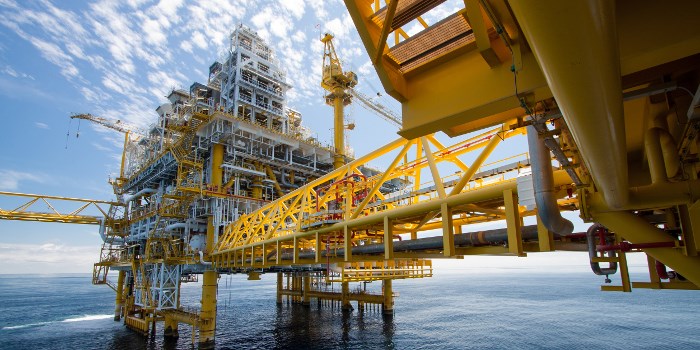^ offshore oil and gas industry
Article by Mr Abhyuday Jindal, Managing Director, Jindal Stainless
Offshore projects are crucial for the production and processing of hydrocarbons around the world. Set up in some of the most extreme environments, offshore activities constitute almost 30% of the world’s crude oil production. However, the saline marine environment mandates high safety and longevity standards for offshore platforms. Infrastructure for marine and offshore applications is often susceptible to considerable amounts of air- and water-borne salts. Conventional carbon steel structures suffer frequent corrosion, requiring regular maintenance and upkeep.
Stainless steel, on the other hand, guarantees to be a robust material choice for heavy-duty offshore applications. The metal is inherently resistant to corrosion, even in marine and coastal environments, and offers a high strength-to-weight ratio for infrastructural applications. Stainless steel also ensures a long design life along with impressive resistance to extreme pressure and high temperatures. It is noteworthy that by using stainless steel, the life expectancy of offshore structures can be increased by nearly five times as compared to its competitors.
Lifecycle cost

In addition to an enhanced life, stainless steel is further qualified for use in offshore applications by the burgeoning emphasis on minimal lifecycle cost (LCC) in architecture and construction. This concept underlines the strong demand for the development of new infrastructure that is highly durable and does not require extensive maintenance or repair.
Weight reduction is also a major driver while installing offshore structures. Reduced weight implies that the structure costs less to build while allowing for more drill pipes and production equipment to be carried for oil and gas production and exploration.
Grades for offshore applications
Austenitic grades, containing 6% molybdenum, have conventionally been in use for permanent immersion in seawater. However, with the globally volatile nickel prices over the past years, duplex stainless steel grades have extensively taken over the austenitic grades. Given their excellent combination of mechanical properties and resistance to stress corrosion cracking, duplex grades make a good choice for offshore applications. UNS S32205 is the most common duplex stainless steel grade used in offshore installations.

While duplex stainless steel grades have proven their mettle for heavy duty offshore applications, the new generation of super duplex stainless steels has properties similar to those of seawater corrosion-resistant austenitic stainless steels. Further, these grades have improved mechanical properties than duplex grades. These super duplex grades are distinguished by the presence of higher levels of nitrogen, chromium, molybdenum, and nickel that contribute to the improved resistance to pitting and crevice corrosion in them. Some examples are UNS S32750 and UNS S32760 which are used for more aggressive offshore applications, for example, submerged components.
Stainless usage in offshore applications
- Submerged components: pipelines and grills for oil, sewage and water, risers for oil platforms, heat exchangers for ships and coastal power plants, equipment attached to hulls of boats and ships.
- Platform structure components: pumps, winches, storage vessels, process vessels, blast gates, umbilical tubes, rebars, cable trays, stairs, tread plates, walkways, oil and gas coolers, gravity separators, etc.
- Deck components for boats and ships like deck eyes, brackets for anchor ropes, shackles, etc.
- Coastal (land-based) handrails, ladders, lamp posts, etc.


